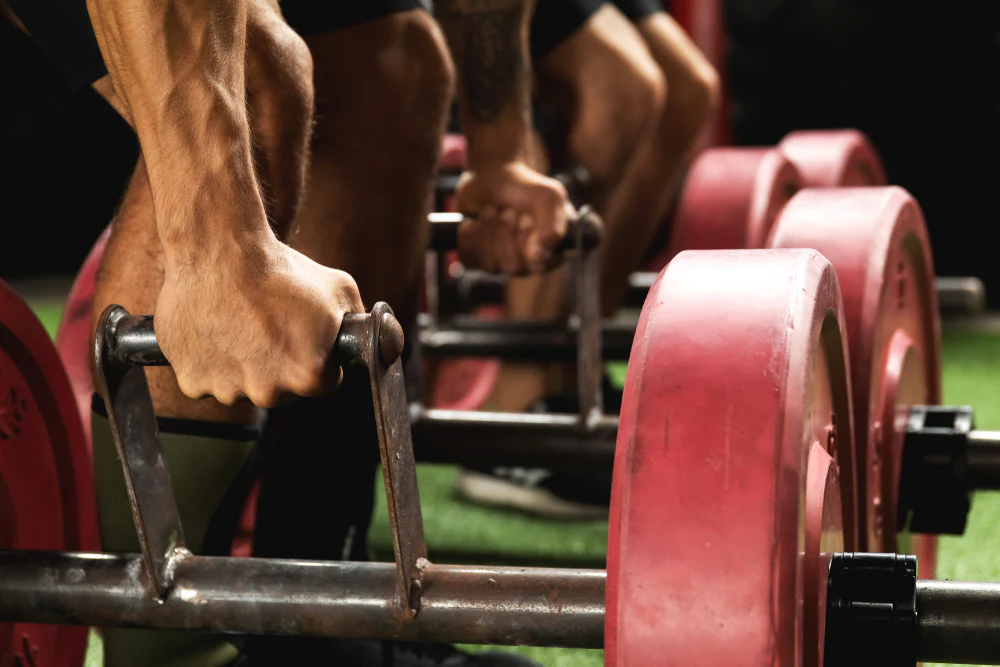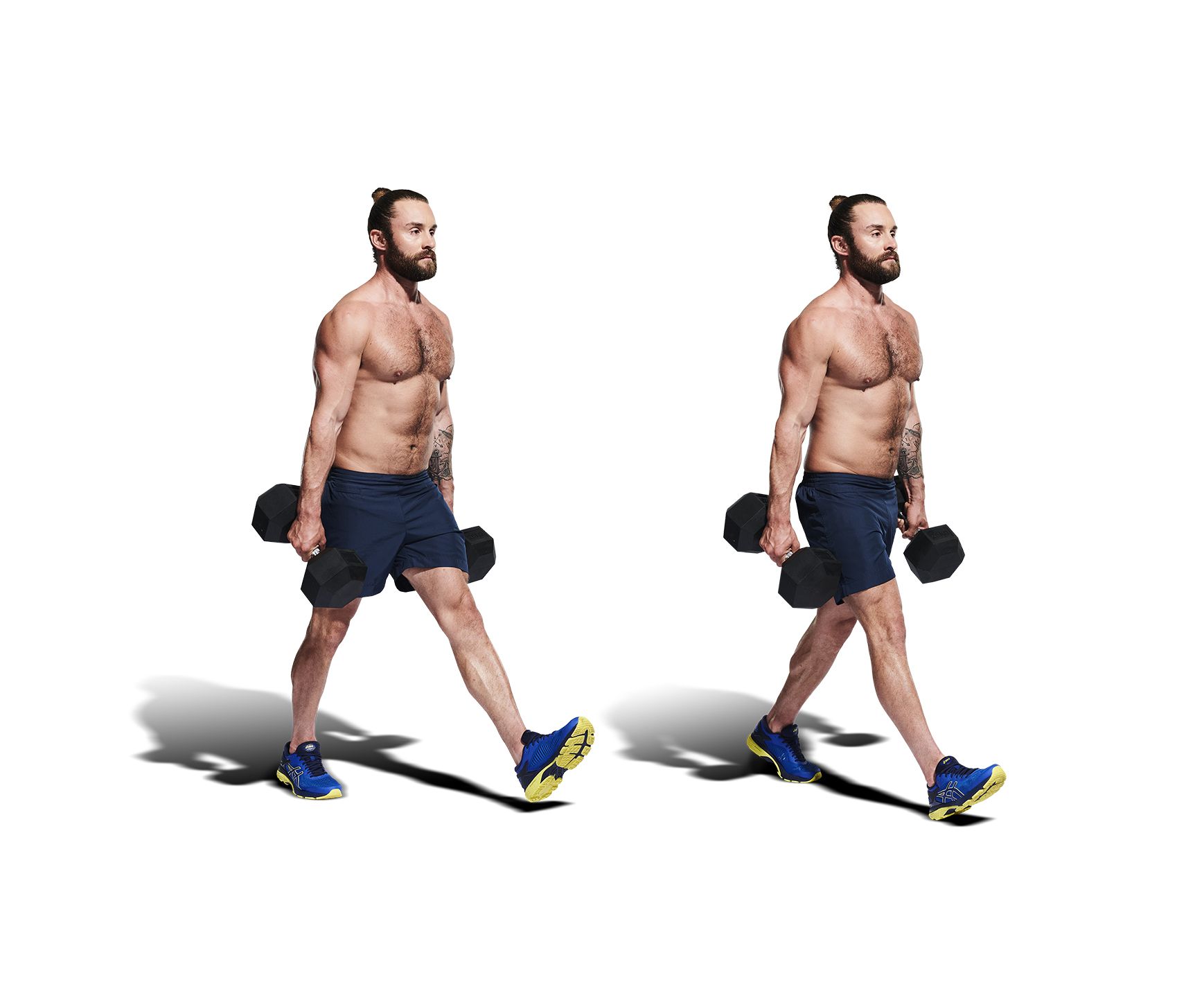The Farmer’s Carry: A Simple Yet Powerful Strength Building Exercise
The farmer’s carry, also known as the farmer’s walk, is one of the most effective full-body exercises for building strength, endurance, and stability.
Though it appears simple—picking up heavy weights and walking—it engages multiple muscle groups and has significant benefits for athletic performance and everyday functional strength.
In this guide, we’ll break down what the farmer’s carry is, the muscles it targets, whether it’s worth incorporating into your workout routine, how it compares to the deadlift, and how long you should perform it for optimal results.
What Is the Farmer’s Carry?
The farmer’s carry is a loaded carry exercise where you hold heavy weights in each hand and walk a certain distance or for a set duration.
The exercise is commonly performed with dumbbells, kettlebells, or specialized farmer’s walk handles, and it is a staple in strongman training, CrossFit, and general strength programs.
How to Perform the Farmer’s Carry Correctly
- Choose Your Weights: Select a pair of heavy dumbbells, kettlebells, or farmer’s walk handles that challenge your grip and endurance.
- Stand Tall: Hold the weights at your sides with a strong, upright posture, keeping your shoulders pulled back and core engaged.
- Walk with Control: Take steady, controlled steps while keeping your torso stable. Avoid swaying or leaning forward.
- Breathe Properly: Maintain deep, steady breaths to keep your core engaged and to prevent fatigue.
- Set a Distance or Time: Walk a specific distance (e.g., 30–50 meters) or perform the carry for a set amount of time (e.g., 30–60 seconds per set).
The farmer’s carry can be modified by using a single weight (suitcase carry) or varying the type of load to challenge different stabilizing muscles.
What Muscles Does the Farmer’s Carry Work?
The farmer’s carry is a full-body exercise that primarily targets the following muscle groups:
Grip and Forearms
The farmer’s carry is one of the best exercises for developing grip strength. The forearm muscles—including the flexors and extensors—work hard to maintain control over the weight, improving both endurance and raw grip power.
Shoulders and Upper Back
The trapezius, deltoids, and rhomboids are heavily engaged to keep the shoulders stable and prevent the weights from pulling you downward.
Core and Stabilizers
The rectus abdominis, obliques, and transverse abdominis are engaged throughout the movement to keep the torso upright and prevent excessive swaying.
Legs and Glutes
The quadriceps, hamstrings, glutes, and calves all contribute to forward movement while maintaining balance under heavy loads.
Because the farmer’s carry strengthens so many different muscle groups simultaneously, it is considered a highly functional movement that mimics real-world tasks like carrying groceries, lifting heavy objects, or moving equipment.
Are Farmer Carries Worth It?
Yes—farmer carries are absolutely worth adding to your training routine, no matter your fitness level or training goals. Here’s why:
Improves Grip Strength
One of the first things to give out during heavy lifting is grip strength. Farmer carries directly target this limitation, improving your ability to hold onto heavy weights in exercises like deadlifts, pull-ups, and rows.
Builds Full-Body Strength
Unlike isolation exercises, the farmer’s carry activates multiple muscle groups at once, making it an efficient way to develop total-body strength and endurance.
Enhances Postural Stability
Walking with heavy weights forces you to maintain an upright posture, strengthening the muscles that keep your spine aligned and reducing the risk of lower back pain.
Boosts Athletic Performance
Many athletes, from powerlifters to sprinters, benefit from farmer carries because they develop explosive power, endurance, and coordination.
Transfers to Everyday Life
Whether it’s carrying groceries, moving furniture, or lifting heavy objects at work, the farmer’s carry builds real-world strength that makes daily tasks easier.

Is the Farmer’s Carry Better Than the Deadlift?
Both the farmer’s carry and the deadlift are exceptional exercises, but they serve different purposes. Comparing them is like comparing sprinting to marathon running—both have unique benefits depending on the goal.
Farmer’s Carry Advantages:
- More time under tension – Since you hold the weights for an extended period, the farmer’s carry improves grip endurance and muscular stamina more effectively than the deadlift.
- Safer for the Lower Back – Unlike the deadlift, which involves a dynamic pull from the floor, the farmer’s carry places less direct strain on the lower back, making it a safer option for those with back issues.
- Better for Conditioning – The continuous movement required in the farmer’s carry improves cardiovascular endurance and stamina.
Deadlift Advantages:
- Superior for Raw Strength – The deadlift allows you to lift significantly heavier weights, making it better for building absolute strength.
- Greater Posterior Chain Activation – Since the deadlift involves a full-range hip hinge, it engages the hamstrings, glutes, and spinal erectors more effectively than the farmer’s carry.
- Essential for Powerlifting and Strength Sports – If your goal is maximum strength, the deadlift is irreplaceable.
Which Should You Choose?
If you’re looking to improve grip strength, endurance, and functional fitness, the farmer carry is the better choice.
If your goal is to develop maximum strength and power, the deadlift should be your focus. Ideally, both exercises should be part of a well-rounded strength training program.
How Long Should I Do the Farmer’s Carry Exercise?
The ideal duration for the farmer’s carry depends on your goals:
For Strength and Grip Endurance:
Use heavier weights and walk for 30–50 meters (or 30–45 seconds per set) with 3–5 sets.
For Conditioning and Fat Loss:
Use moderate weights and walk for 60 seconds or longer, performing 4–6 sets with shorter rest periods.
For Athletic Performance:
Combine heavy and light carries to develop both strength and endurance, adjusting distances and weights accordingly.
A good rule of thumb is to include farmer carries 2–3 times per week as part of your regular training routine.
Conclusion
The farmer’s carry is one of the most effective and functional strength training exercises you can perform. It builds grip strength, improves posture, enhances endurance, and develops full-body strength in a way that few other exercises can.
While it may not replace the deadlift in terms of raw power development, it is a highly valuable addition to any strength training program, especially for those looking to improve grip endurance and real-world strength.
The key to maximizing results is to perform the exercise correctly, use progressive overload, and adjust duration and intensity based on your goals.
Whether you’re an athlete, bodybuilder, or just someone looking to gain functional strength, the farmer carry is an exercise you should not overlook.







